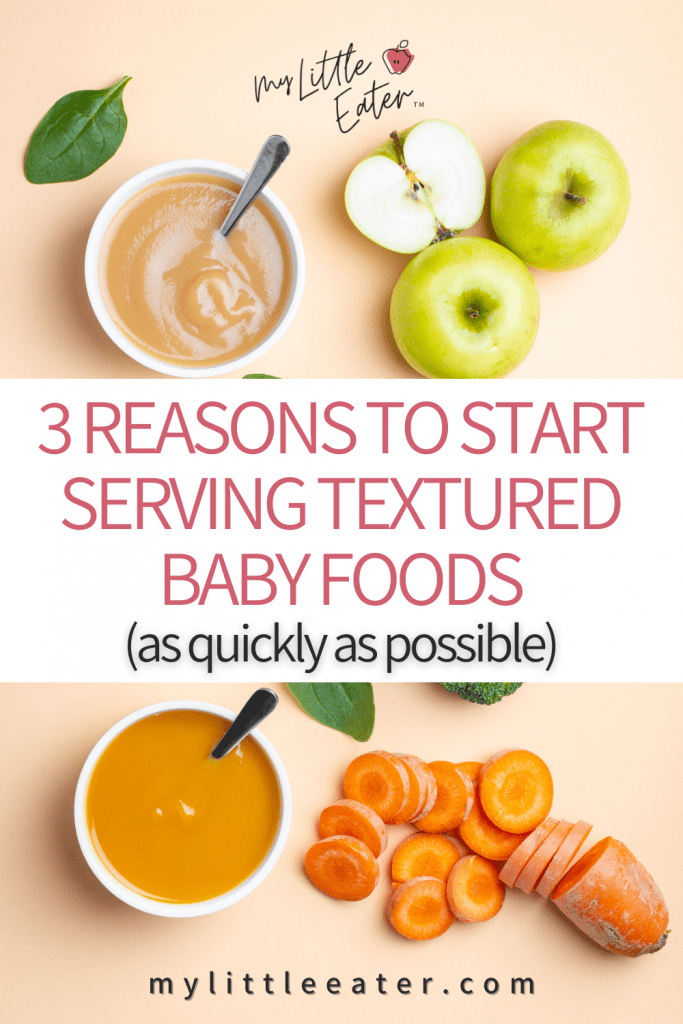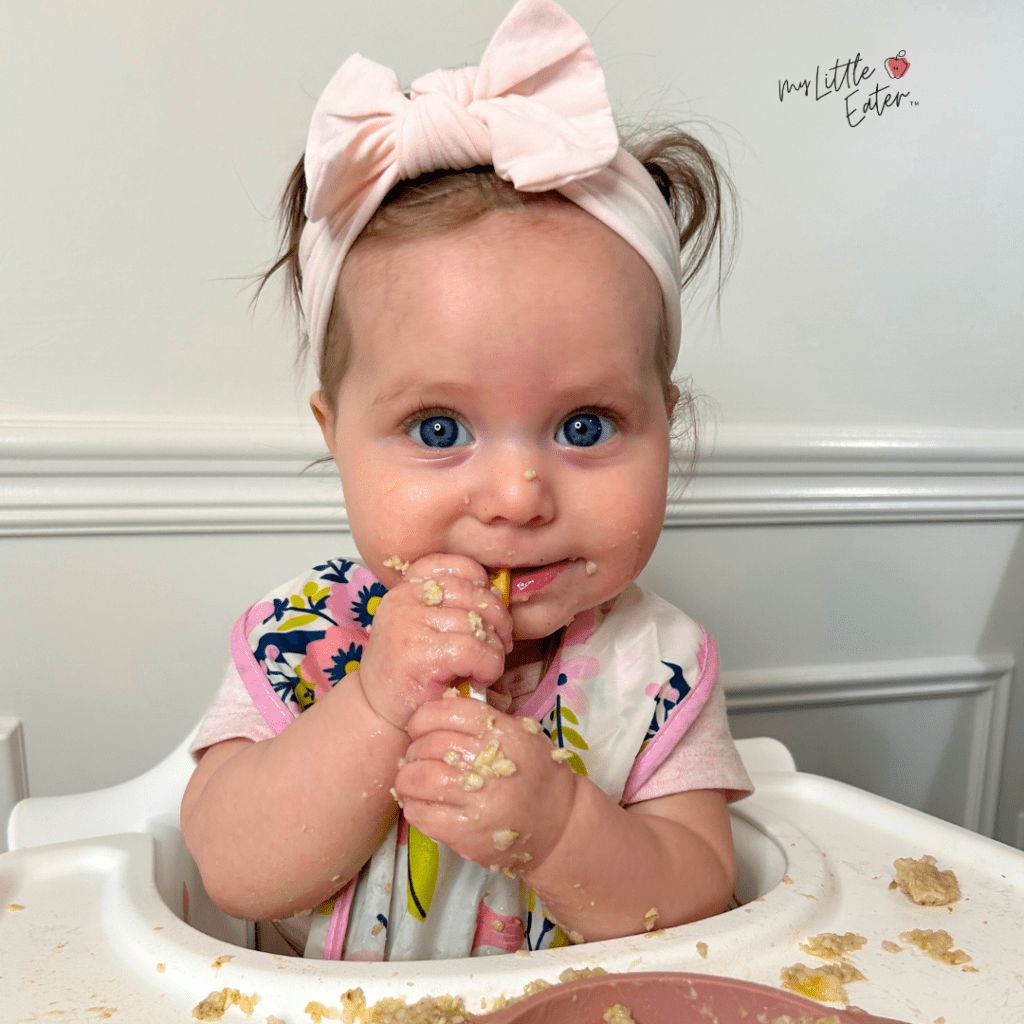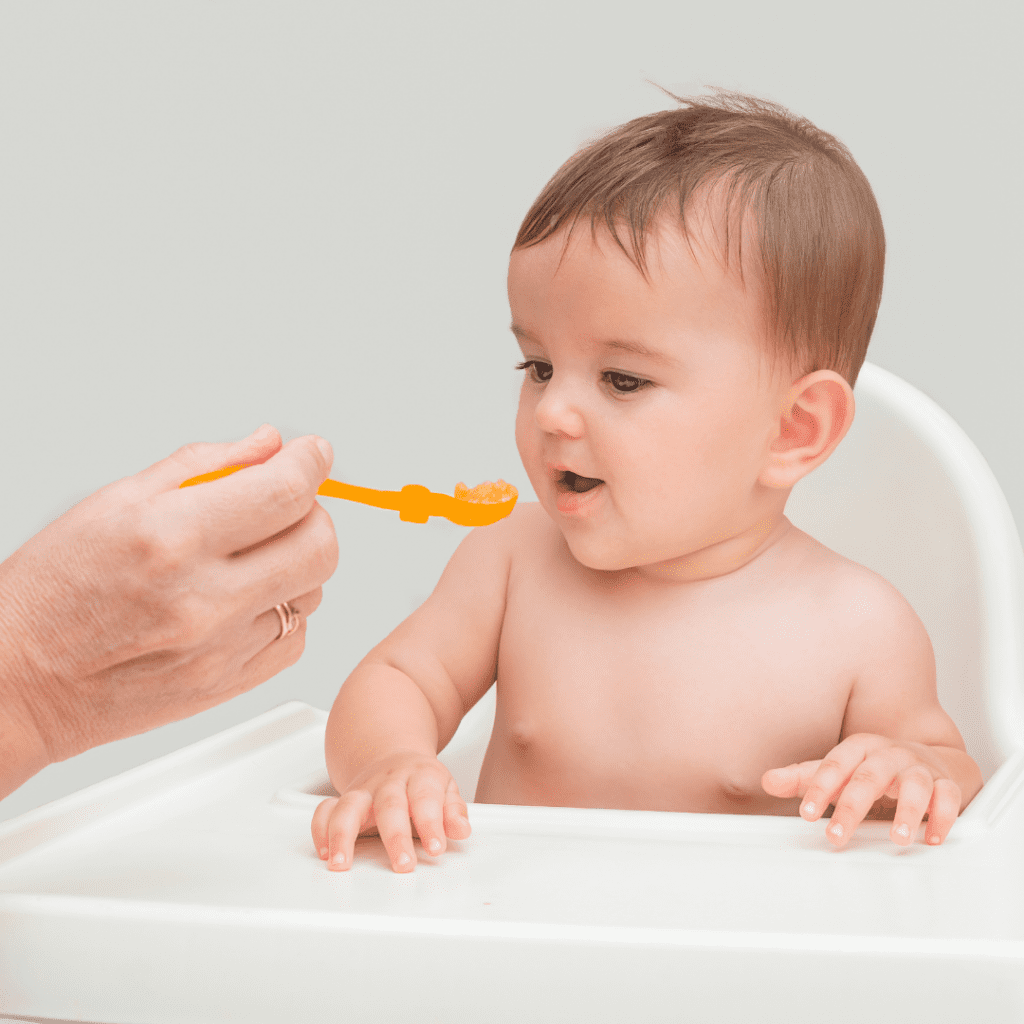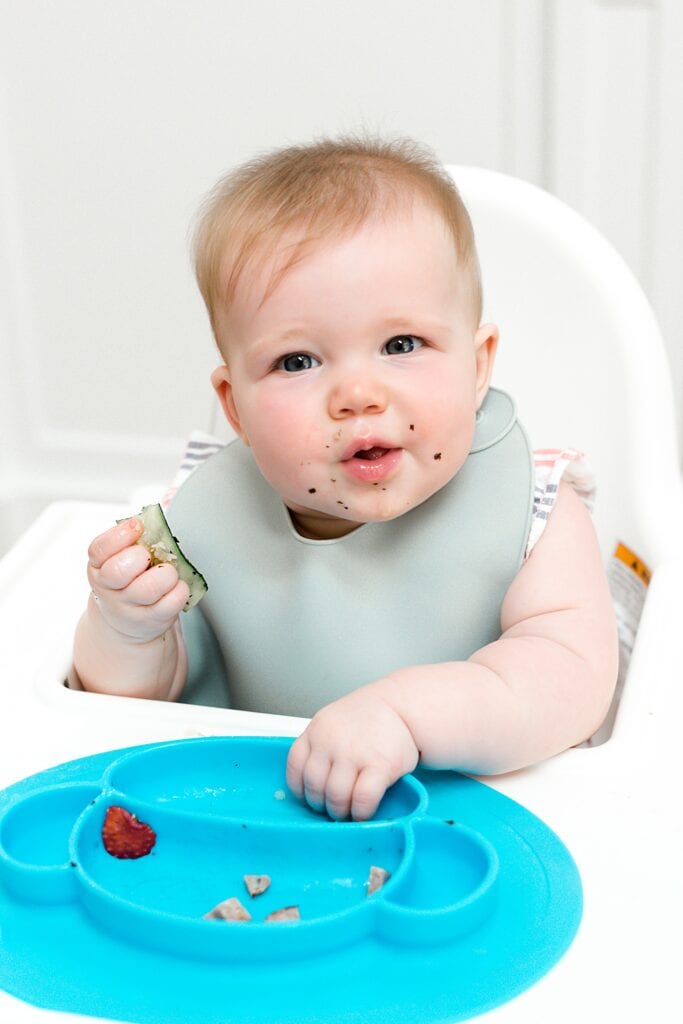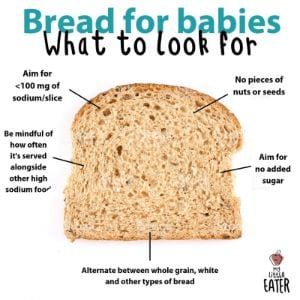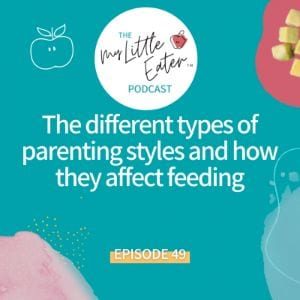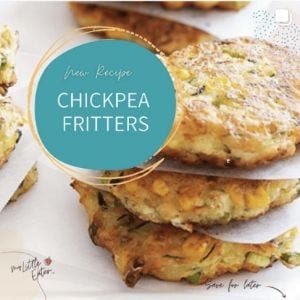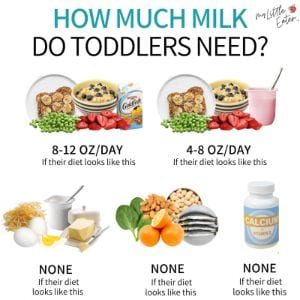Bonus Material: Free workshop – moving from purées to finger foods…without the fear!
Starting solids using the traditional purée method of offering baby food is absolutely fine! But eventually, they will need to eat something other than simple purées. Giving them foods of various textures is very important.
But it can be hard to figure out exactly when the best time to start finger foods is. You have to think about when to advance in food textures, and of course, figure out exactly how to do that. And if purées are all your baby knows (or wants), you might be tempted to wait until they have their pincer grasp to offer solid foods…or maybe even wait until their first birthday.
As a feeding specialist team filled with pediatric dietitians, speech-language pathologists, and parents who have been there, we get it. Purées are simple, and finger foods (especially those of more difficult textures) are complex…aka scary.
We still recommend introducing finger foods and more advanced textured baby food as early as possible by recognizing when your baby is ready.

Now, we know that some parents prefer to ease in and do things more gradually. The key is in not allowing yourself to become too comfortable. Textured baby food can’t, and shouldn’t, be avoided forever!
That’s why we created the Texture Timeline™ to help parents continue to advance in textures, regardless of what feeding method they choose to start with. Additionally, if you’re thinking you want to begin with purees and give homemade baby food a try, check out my step-by-step guide, here.
Now, keep reading to find out why textured food for babies is so important, and how to know your baby’s ready for it.
And if going at a gradual pace sounds like your style for introducing solids, sign up for our free workshop on moving from purées to finger foods (gradually), without the fear!
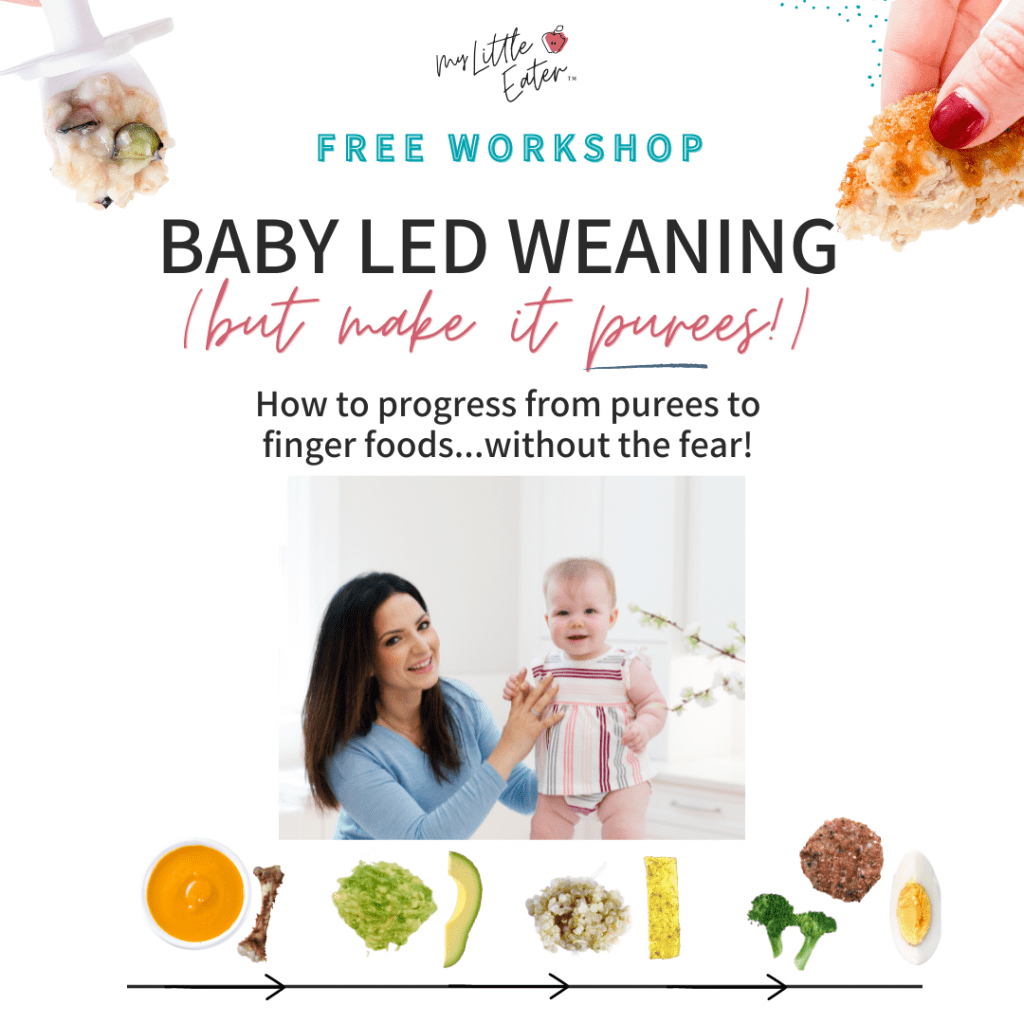
WHEN CAN BABIES EAT TEXTURED BABY FOOD?
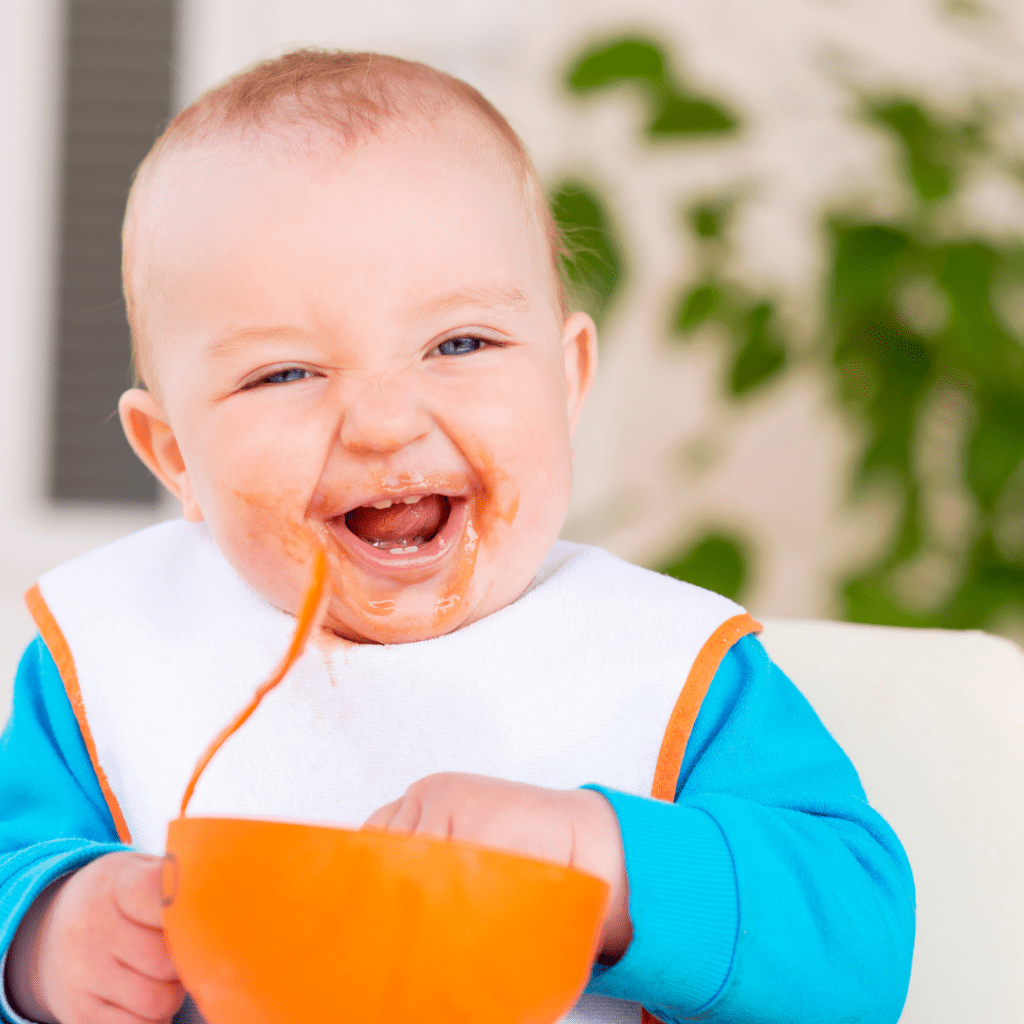

The developmental skills to watch for in your baby
Your baby should have the ability to safely swallow smooth baby purees, without any difficulty or excessive gagging. And, they should have started reaching for objects, or pieces of food, and bringing them to their mouth with precision. These signs usually happen when your baby is around 6-7 months of age.
This doesn’t leave a whole lot of time for baby purees, which is the point!
That’s because your baby doesn’t need to start solids until they’re showing all of the developmental signs of readiness, which happens at around 6 months of age. Until that point, breast milk or formula provides them with all the nutrition they need.
How long should purée feeding last?
Once you’ve established that they can swallow safely, and you can see that your baby knows how to handle purées, they’ve served their purpose! There’s no need to continually offer exclusively purées, in fact, this can be holding them back when baby is ready for more solid food.
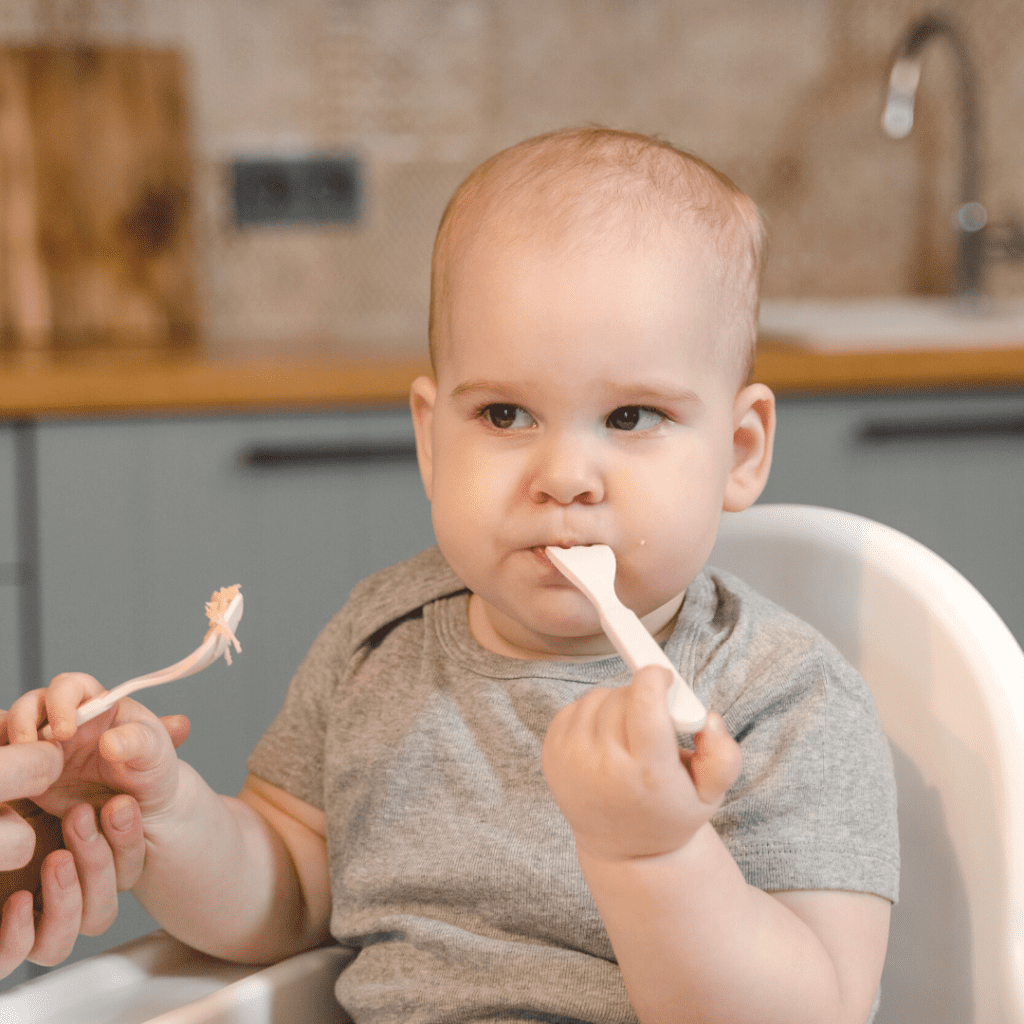

For some babies, purées need to be offered for a few weeks before they get the hang of it. For others, it may only take a couple days!
This doesn’t mean you have to stop offering purées on a spoon because you can definitely do a bit of a mixed approach. But, now that your baby is ready and able to pick up food, and handle different textured food, they can (and ideally will) start to self feed with various textured foods.
Let’s review the benefits of introducing finger foods and a variety of textures early on.
PS: if you don’t dig blogs, we get it! Listen to the podcast on this topic below.
BENEFIT #1: VARIETY IN SOLID FOODS HELPS DEVELOP ORAL MOTOR SKILLS
Offering finger foods early-on really helps your baby to develop stronger oral motor skills. It teaches your baby how to bite pieces of food, and how to chew that food, which helps ensure baby develops better jaw strength.
Finger foods even help them learn how to use their tongue to maneuver pieces of textured food from one side of their mouth to the other, to bring food to the back of the mouth, and eventually – to swallow it! The more practice they get in the early months, the better they become at using these oral motor skills later in life.
In fact, research shows that children who haven’t really been introduced to lumpy foods, or more advanced textures until after 9 months, actually experienced more feeding difficulties as time went on.
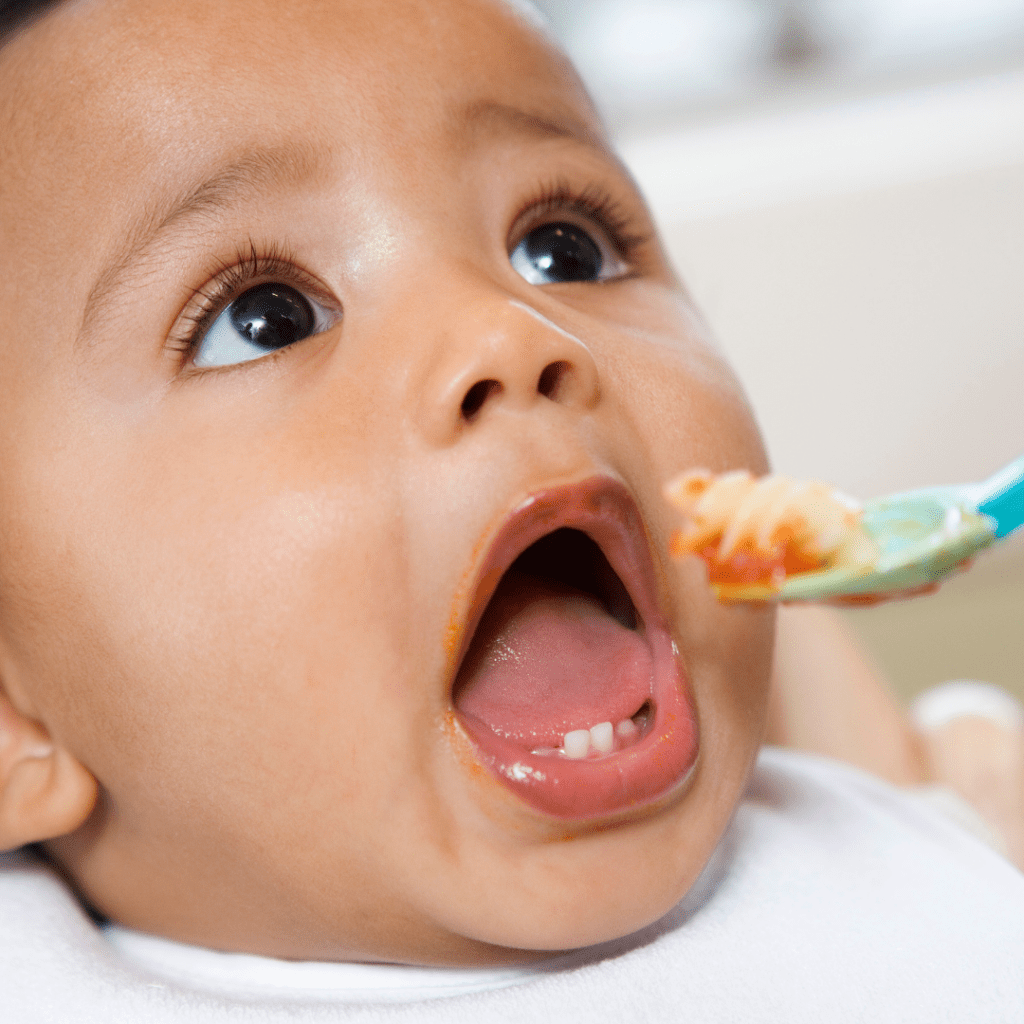

We recommend offering variety in the textures of finger foods too, because the more variety the better! There’s no need to continuously offer the same typical “baby finger foods” (think banana, sweet potato, avocado, and other soft finger foods that are easy to chew), for long periods of time.
Offering variety will help your baby see what they need to do to manage and maneuver thick, lumpy, spongy, crispy, and chewy textures! Give your baby the opportunity to try various solid foods by promptly nudging your baby through the different spectrum of textures, using the Texture Timeline™. This will help increase their acceptance of ALL types of foods and food consistencies, which can save you the future headache of texture troubles down the road!
If you’re interested in learning how to gradually move from purées to finger foods (without the fear!), register for our free workshop! We’ll be introducing you to our signature Texture Timeline™ which directly lays out each phase of texture progression, with food examples, so you know just what to feed your baby based on their current skills.
Everyone who attends the workshop gets a free copy of the Texture Timeline™ Starter Guide as well! Can’t wait to have you join us!
BENEFIT #2: FINGER FOODS CAN HELP DESENSITIZE THE GAG REFLEX
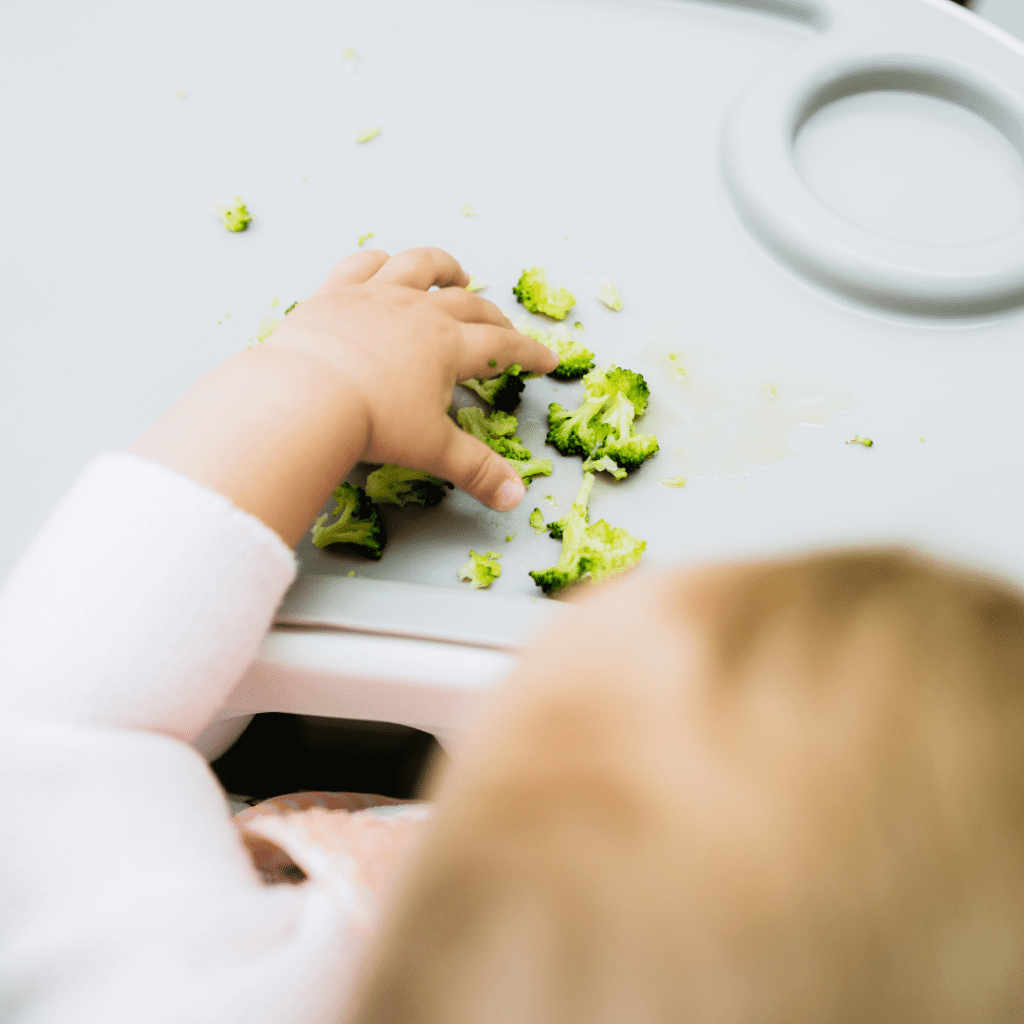

Introducing finger foods earlier is a great way to gradually desensitize your baby’s gag reflex, which is very sensitive in the beginning!
The gag reflex starts off positioned at the front of baby’s mouth, usually right around the front portion of the tongue. When something touches this area, or goes slightly past it, they’ll likely start gagging and sometimes it can be excessive.
By introducing finger foods, you give your baby the opportunity to become accustomed to having food further back in their mouth, over the molar area (which is where food is chewed), and spread over a larger surface area on the tongue. Over time this will help move the gag reflex towards the back of the tongue.
Naturally, you’ll see your baby gagging more in the beginning with new textured foods as they work to push this reflex back – that’s perfectly normal! But in the long run, this will make mealtime more enjoyable (without gagging every two seconds), and reserves the gag for truly needed situations.
This is why parents that begin on purées will often report an increase in gagging when their baby is older, since they haven’t had practice on different textures yet. Whereas parents of babies that begin on finger foods report more gagging earlier on. The added practice in the beginning means their gag reflex is more desensitized by the time purée-fed babies are just being introduced to advanced textures.
Note: That doesn’t mean that you can’t start with purées, or that it’s wrong to. Babies will gag, the timing of it will just vary depending on where you start and how quickly you progress.
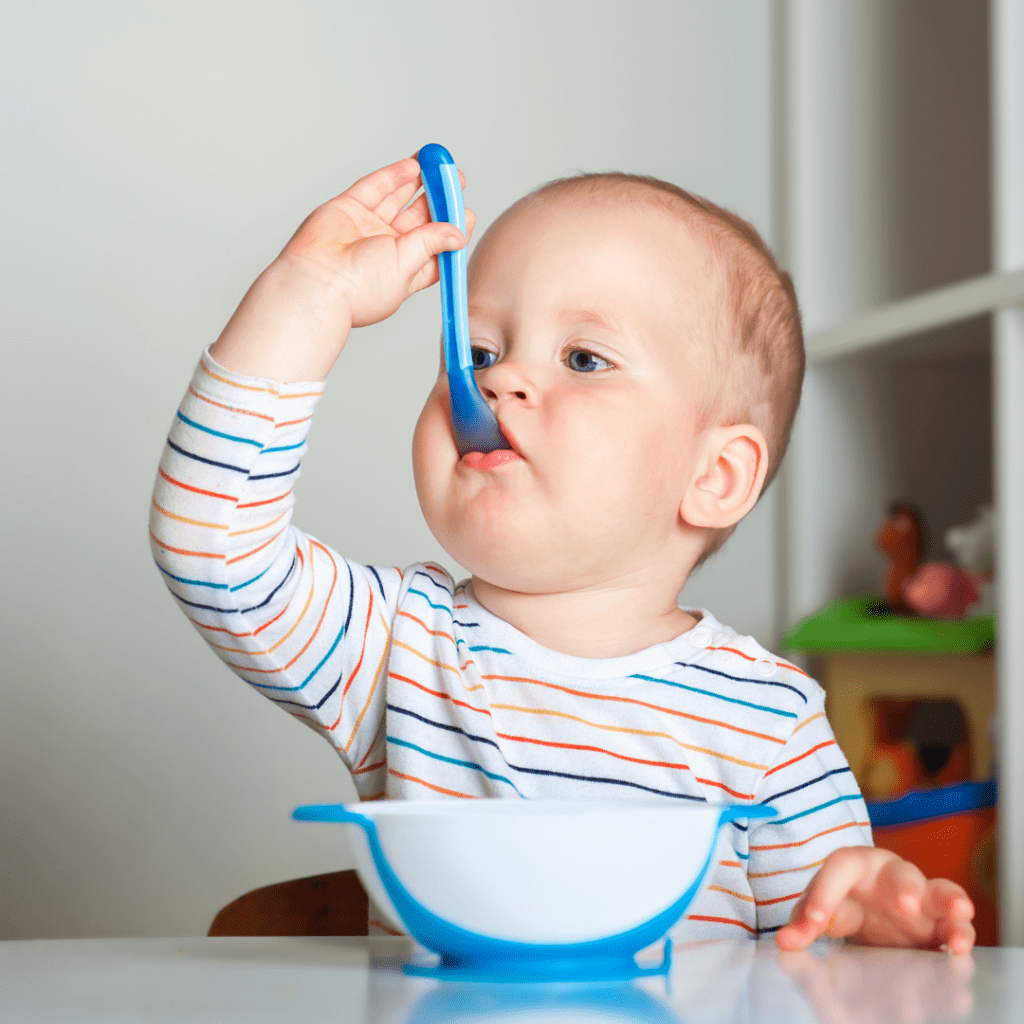

Why how you react to gagging matters
It’s important to keep those early mealtime experiences positive and enjoyable, and excessive gagging can sometimes do the opposite. It can make your baby hesitant to try new foods later on (cue picky eating!).
This is why it’s really important that you feel comfortable with gagging, and work really hard to remain positive while it’s happening. Encouraging your baby to keep coughing and assuring them they’re doing a great job, helps ensure that your fear doesn’t transfer to your baby.
It’s also important to note that delaying finger food introduction does not help with this. Whenever you introduce finger foods there is going to be more gagging – because it’s new. So, regardless of when you choose to introduce finger foods, you’re going to see an increase in gagging coinciding with that introduction.
Additionally, if you wait longer to introduce, you may notice the reaction is more severe because they are SO used to purées at that point that the new textures are even more difficult for them to manage.
BENEFIT #3: IT PROVIDES A SENSORY EXPERIENCE WITH FOOD
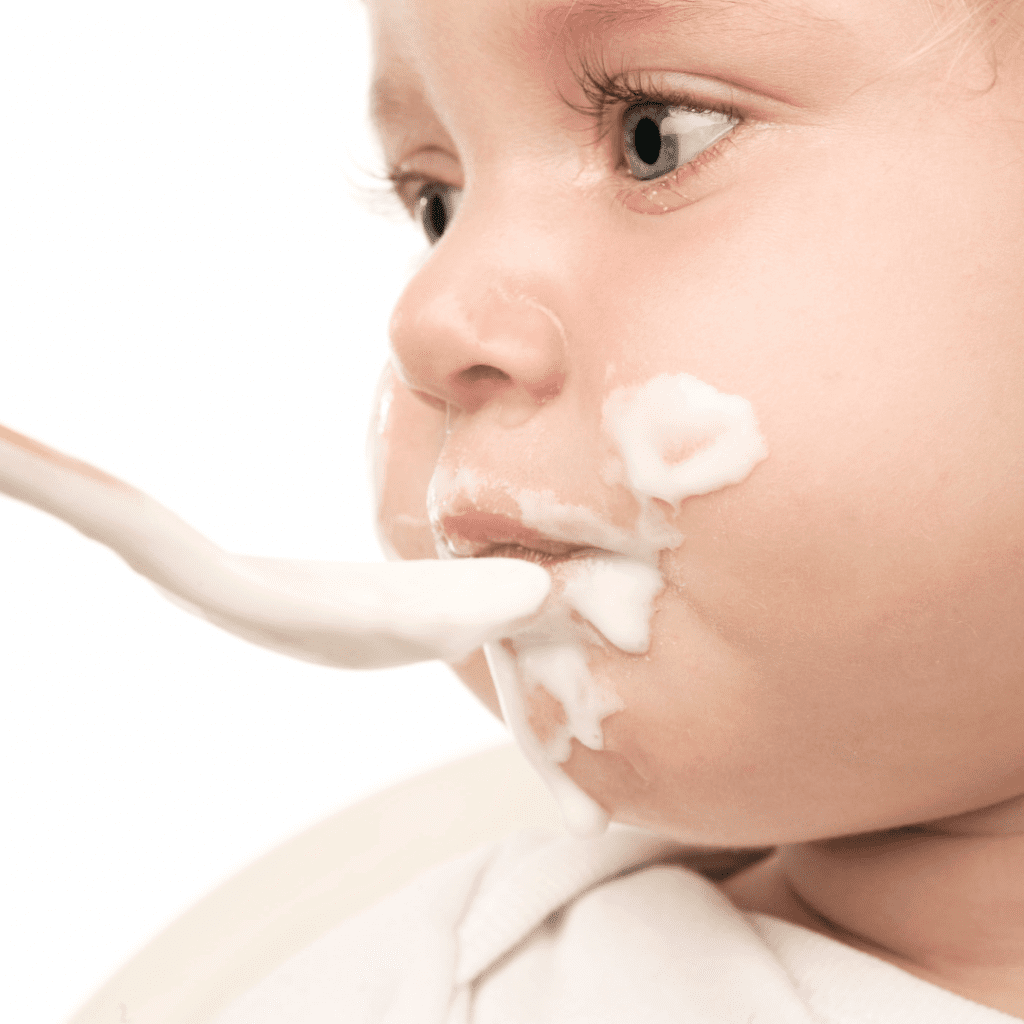

Introducing different textures through a variety of finger foods allows your baby to experience eating with all five senses, which reduces the chances of pickiness as time goes on.
Sensory processing is HUGE when you’re learning about a new food, and when determining if you like it or not. When a child is learning to eat it’s not just about taste. It’s also about the smell of the food and what it feels and tastes like in their mouth, cheek, or squished between their hands. That whole sensory experience, including playing with food, is actually really important for your baby. It introduces them to their food on a more intimate level.
Think about when you’re spoon feeding for a long time…most babies will miss out on all of this! Baby’s food goes right from the spoon, to the center of their tongue, with little opportunity to smell the food, or see the food, let alone touch or play with it.
When the time comes, much later on, and you finally offer finger foods (or new foods in general), your baby may show an aversion to different textures or types of food. This is because they didn’t “get to know” the baby food on a sensory level early-on.
The bottom-line here, giving your baby lots of exposure to a variety of textures and flavors, with all five senses, will reduce the likelihood of picky eating later on!
YOUR MAIN TAKEAWAY
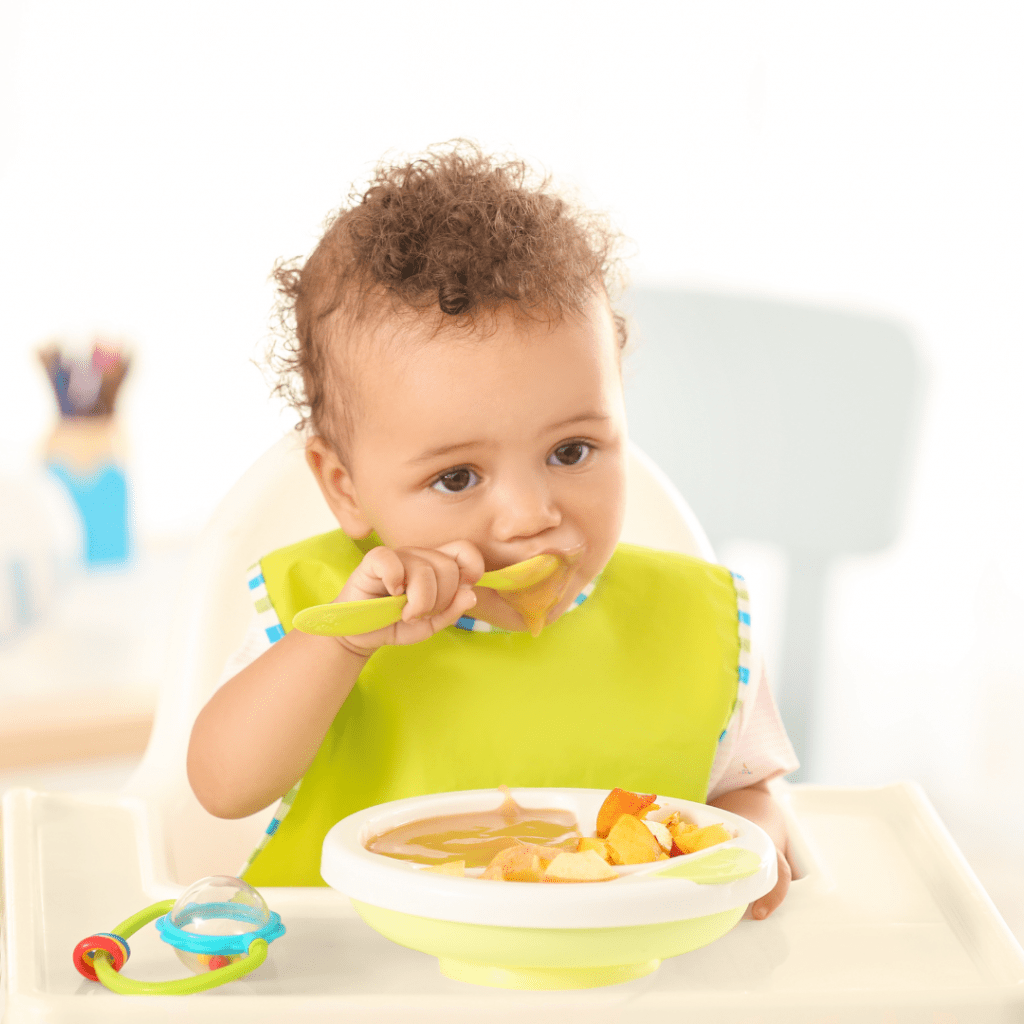

At the end of the day, please know that purées and finger foods can, and should, both have a place in feeding! There’s a time and a place for each, and when you’re reading your baby’s cues, and feel confident and educated on how to do them both, feeding your baby a variety of textures will come naturally!
Even if it’s been a few months and you haven’t introduced your baby to finger foods yet, that’s ok! The beauty is you can jump in at any time and start offering that practice, once you see they’re ready and you are willing!
You can also work up to offering your baby the same family foods that you eat with a more gradual approach that moves from purées to mashed foods to solid food with more texture, with our signature Texture Timeline™ tool.
Remember to sign up for the free workshop on gradually moving from purées to finger foods, without the fear! If you’re still feeling nervous, or struggling with the thought of advancing textures with your baby, this gives you access to the Texture Timeline™, including a free starter guide just for attending, and will help with taking the first steps!



And if you want access to the complete Texture Timeline™, along with our new Texture Timeline™ Food Library (still under construction but updated weekly) for showing how to safely serve every food… plus everything you need to know about starting solids, then you need the Baby Led Feeding online course. Check it out now and get started during your baby’s next nap time!
FOUND THIS HELPFUL? PIN IT TO SAVE FOR LATER!
